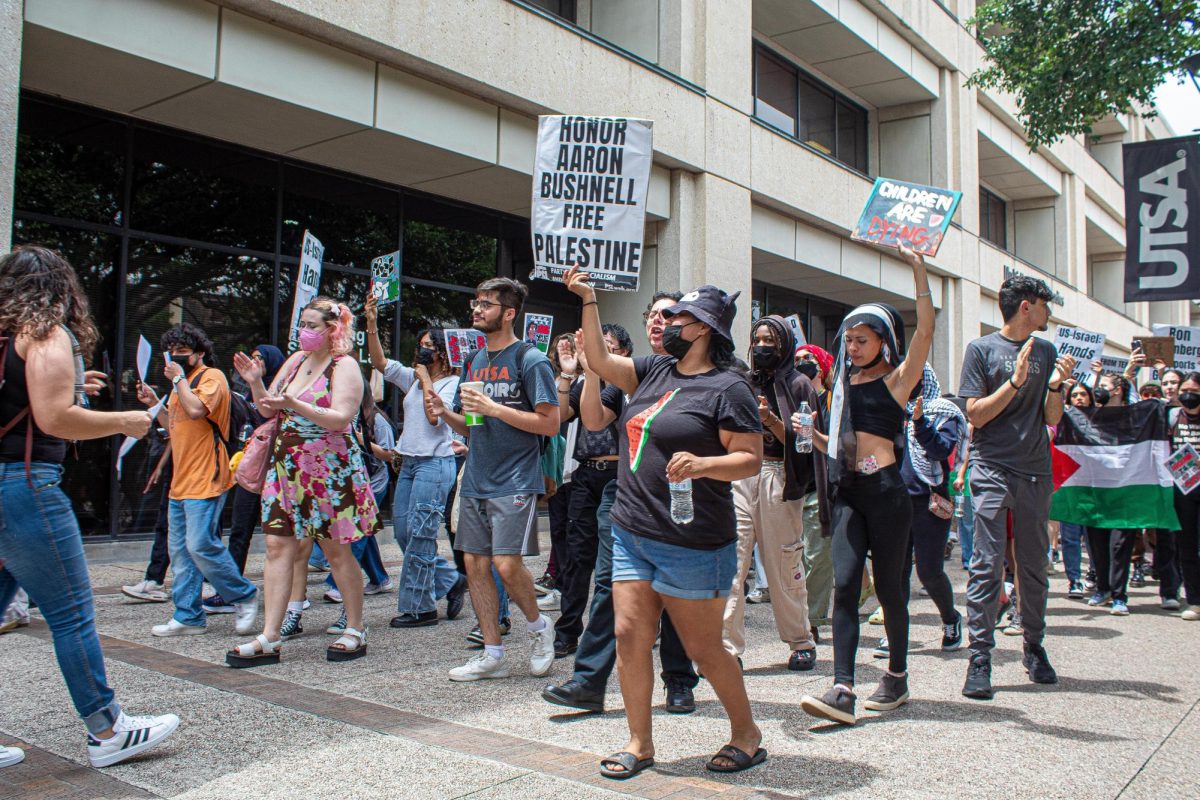

The University of Washington took home the Alamo Cup by winning the 2012 National Collegiate Cyber Defense Competition (NCCDC) hosted by UTSA’s Center for Infrastructure Assurance and Security (CIAS). The second and third place teams were from the United States Air Force Academy and Texas A&M.
Every year, teams from around the country compete in 10 regional competitions. The winning teams from those regional competitions go on to compete in the national competition.
“The CCDC program is kind of like March madness, but with computer stuff,” the CIAS’s Associate Director of Technology and Research Dwayne Williams said. “We have qualifying events that feed into regionals. The winners of the regionals come to San Antonio for the National Championship. The CIAS hosts and executes the National Championship event, but we also oversee the rest of the program.”
Each school is allowed one team of up to eight students. Each team is given a fully functioning small business network that they must secure and defend. Each gets exactly the same network and uses the same hardware so that no team has an advantage over the other.
“The small business that we give the team is functional, but not secure,” Williams said. “There may be 40 different ways to break into that machine, and it is the team’s job to come in, secure the system, maintain the services that we tell them to and operate this small business.”
Competitors must also face attacks from the Red Team, a group of hackers that tries to undermine each team’s network. This gives each team experience with the difficulties that they might face in the real world, experience that may not be able to obtain elsewhere.
“Another problem we saw is that a lot of times the academic programs didn’t provide tactical experience,” Williams said. “They might have a couple of labs, but very few students will have actually sat down and looked at malicious traffic or been attacked and been able to respond to it. Those are some of the things that we have integrated into the competition.”
The competition is defensive only: Teams cannot attack one another to gain an advantage. There is a specific reason for that rule.
“The teams that come in here are training to go work for say, Wal-Mart,” Williams said. “You get hired by Wal-Mart, but you are not paid to attack K-Mart, at least not publically. You are paid to defend Wal-Mart. The greatest demand out there now is for people that can secure and defend a network.”
Some of the past year’s winners came from very small schools such as Baker College out of Flint, Michigan, which won the competition in 2008 and 2009.
“The group from Baker College is the far end of the spectrum of people who are really into this,” Williams said. “A group of individuals that trained as a team, according to them, for probably between 10 and 20 hours every week for a year. They absolutely came in and dominated the competition. Every single one of those kids, when they left, had fantastic job offers.”
UTSA has hosted the CCDC annually since its creation in 2005.
“The first year we did CCDC it was just a regional event,” the CIAS’s Associate Director of Technology and Research Dwayne Williams said. “We had five schools in the state of Texas only. That was kind of the prototype of the event. We went from a regional effort in 2005, and in 2006, we actually went national with it on a limited basis, and it’s grown ever since.”
The CCDC is designed to level the playing field so that students who are interested in this career path would be able to test their mettle in the cyber arena.
“The initial concept came out of a National Science Foundation sponsored meeting,” Williams said
Lance Hoffman and Ron Dodge wrote a paper and said, ‘We would like money to put on a conference and at that conference the goal is going to be to discuss this issue: Can you create a cyber-security competition? Something that is fair and equitable so that a school like MIT, a school that has billions of dollars in endowment funds, doesn’t have a huge advantage over ‘Podunk state’. “
Another incentive for students interested in pursuing a career in cyber defense is that this career field is growing at 28 percent per year, according to the Bureau of Labor Statistics.
“There are a number of companies that will move your name to the top of their lists because they know you have been exposed to a stressful environment; you have the ability to work on a team; and you’ve got the communication skills, practical skills, and technical skills,” Williams said. “It is absolutely not uncommon for students to leave the nationals with more than one job offer. We had five or six kids last year that had job offers in the six-figure range.”
Companies will often recruit students at every level of the competition as well. Some companies like Facebook, Zynga, Microsoft, and Deloitte will often compete to recruit the same student. So the demand for students with these skillsets is high.
“The fact is, nobody really has a good handle on how many people we need (in the cyber security career field); it is just more,” Williams said. “It is not one of those career fields that is just going to go away.”
For more information on the CIAS, NCCDC, and the cyber security career field visit their website at http://cias.utsa.edu/.











